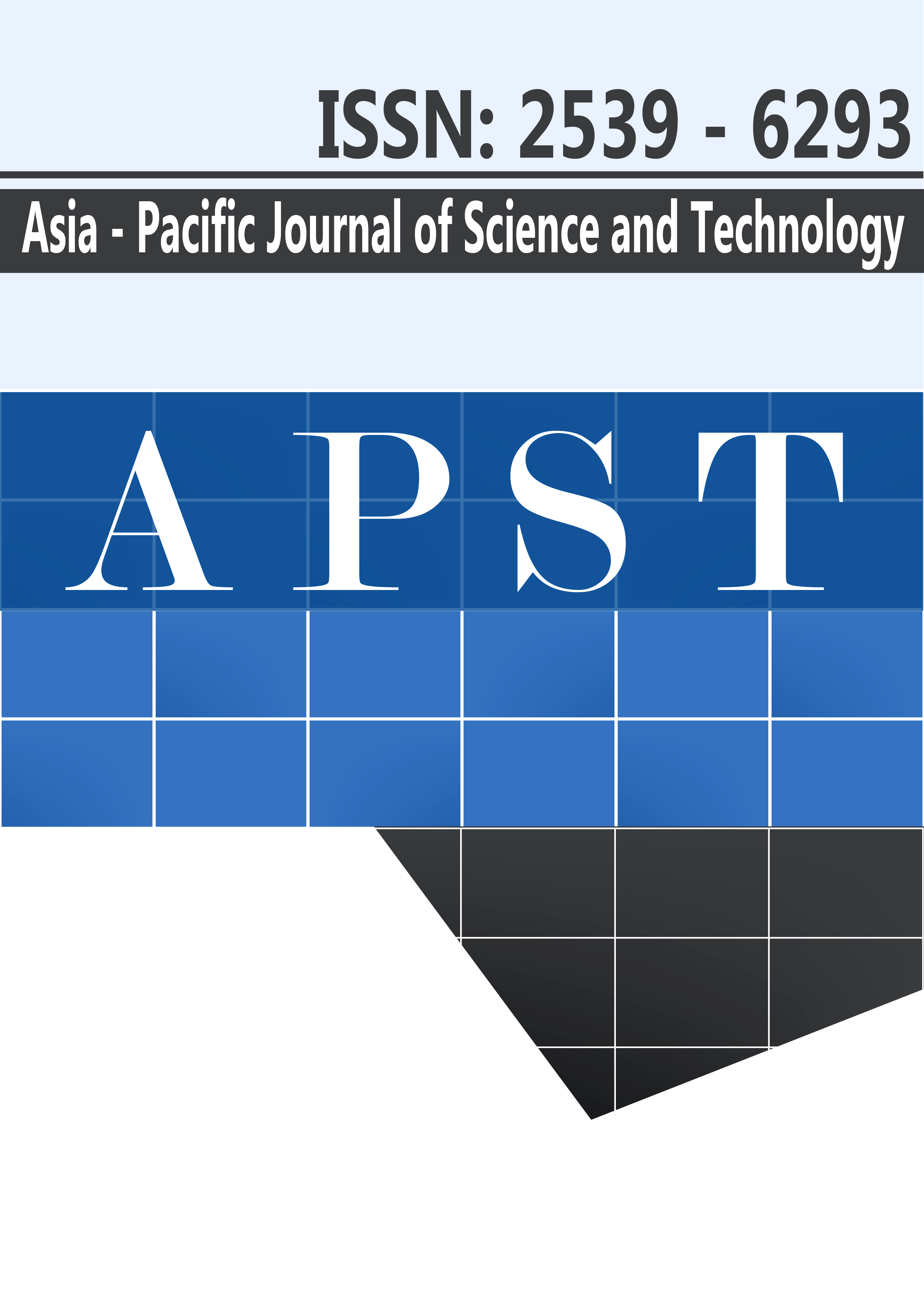The development of training package using the P-PIADA training model: a case study on the usage of GUI – MATLAB program
Main Article Content
Abstract
This paper aims to develop of the training package using the P-PIADA training model on the usage of GUI–MATLAB program. First, we surveyed the need for training content, then analyzed various training courses from related documents and revised related literature. Next, we developed the P-PIADA training model based on STEM education. The P-PIADA training model consists of six processes including 1) Preparation, 2) Pre-learning, 3) Informing, 4) Application, 5) Discussion and 6) Assessment. Then, we constructed a training package on the usage of GUI–MATLAB program. The training package consists of a trainer’s manual, PowerPoint presentation, teaching aids and an achievement test. Finally, the quality of the developed P-PIADA training model was evaluated by five experts and was implemented by a sampling group of 25 trainees. The results showed that the quality of the developed P-PIADA training model was appropriate (mean=4.38, S.D. = 0.18) and the P-PIADA based training package was efficient in according to Meguigans’s theory.
Article Details
References
[2] Intalapaporn C, Patphol M, Wongyai W, S., 2015. Pumsa-ard. Development of Training Curriculum to enhance the ability of STEM Education Learning Management for School Teachers. Veridian E- Journal of Silpakorn University 2, 49-56.
[3] Gonzalez H, Kuenzi J., 2012. Science, Technology, Engineering, and Mathematics (STEM) Education: A Primer Congressional Research Service. Library of Congress, Washington, D.C., United States
[4] Pellegrino J, H.Margaret., 2012. Education for Life and Work: Developing Transferable Knowledge and Skills in the 21st Century. National Academy Press, Washington, D.C., United States.
[5] Yogendra P., 2016. Comparative Study of Students’ Problem Based Learning Over Two Years through Semester Projects in Fluid Mechanics. The 2016 ASEE North Central Section Conference, 1-14.
[6] Robert K., 2017.Problem-Based Learning in Engineering Ethics Course. Interdisciplinary Journal of Problem-Based Learning, 11,1.
[7] Kanyawit K, Warinee W, Pichit U, A. Somsak., 2016. Development of REPEA Learning Model based on STEM-T Education. The International STEM Education Conference, 123-126.
[8] Nipont T, Somsak A., 2016. Engineering Instructional Management using MISOP Integrated Learning model. The International STEM Education Conference, 4-7.
[9] Khemmani T., 2016. Teaching Science: Body of Knowledge for Effective Learning Experience. 20th Edition. Chula Press, Bangkok, Thailand.
[10] Siripatharachai P., 2013. STEM Education and 21st Century Skills Development, Journal of Executive 33, 49-56.
[11] Klomim K., 2016. Learning Management based on STEM Education for student Teachers. Journal of Education Naresuan University 18, 334-348.
[12] Lyman Ott R, Micheal T., 2000. An Introduction to Statistical Methods and Data Analysis. Duxbury Press, California.
[13] Thanin S., 2012. Research and Statistical Analysis with SPSS and AMOS. Thirteen Edition: Bangkok, Thailand.
[14] Haddad W.D., 2002. Technologies for Education,” Academy for Education Development. Washington, D.C., United States.


